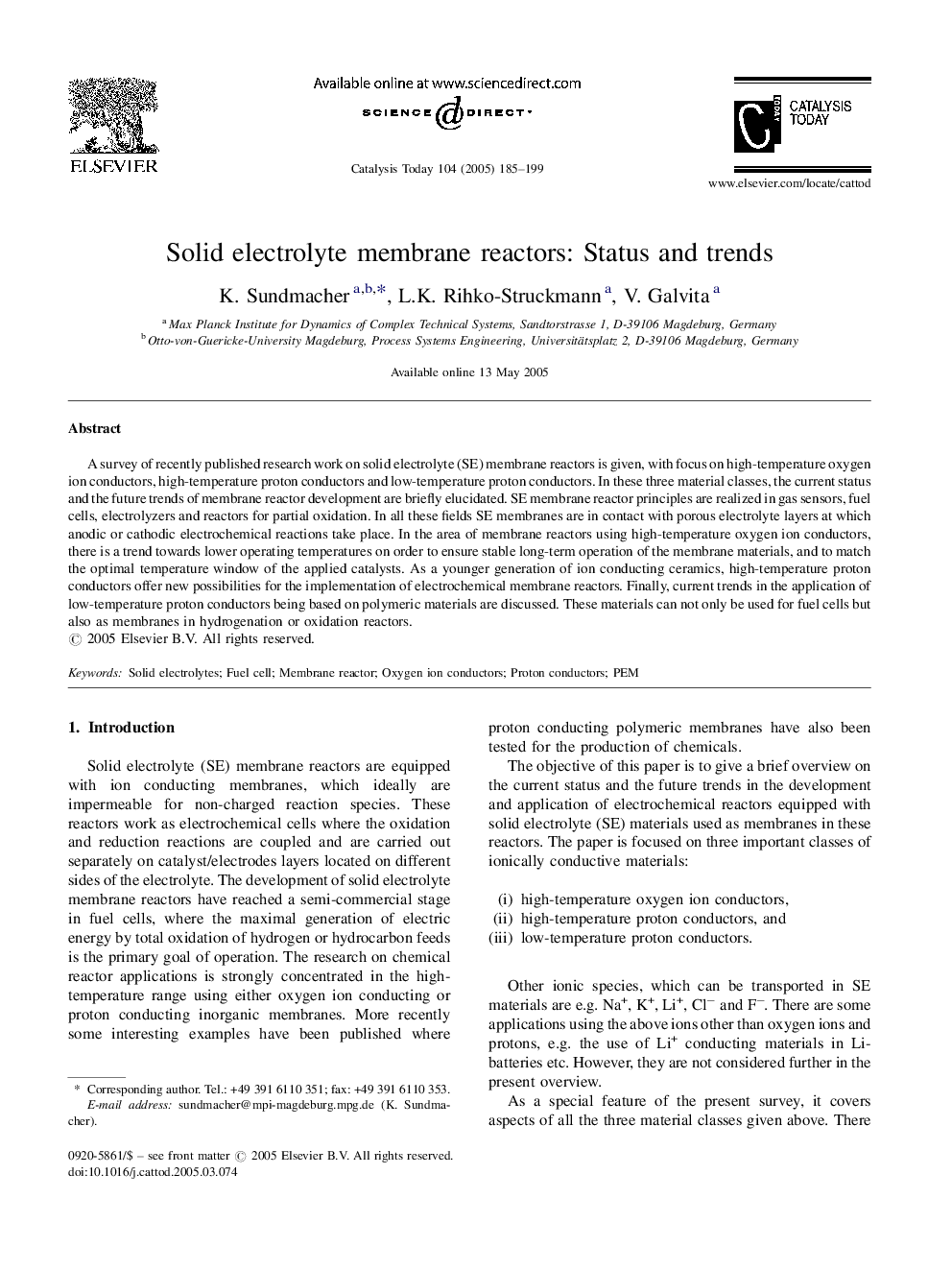| Article ID | Journal | Published Year | Pages | File Type |
|---|---|---|---|---|
| 9610392 | Catalysis Today | 2005 | 15 Pages |
Abstract
A survey of recently published research work on solid electrolyte (SE) membrane reactors is given, with focus on high-temperature oxygen ion conductors, high-temperature proton conductors and low-temperature proton conductors. In these three material classes, the current status and the future trends of membrane reactor development are briefly elucidated. SE membrane reactor principles are realized in gas sensors, fuel cells, electrolyzers and reactors for partial oxidation. In all these fields SE membranes are in contact with porous electrolyte layers at which anodic or cathodic electrochemical reactions take place. In the area of membrane reactors using high-temperature oxygen ion conductors, there is a trend towards lower operating temperatures on order to ensure stable long-term operation of the membrane materials, and to match the optimal temperature window of the applied catalysts. As a younger generation of ion conducting ceramics, high-temperature proton conductors offer new possibilities for the implementation of electrochemical membrane reactors. Finally, current trends in the application of low-temperature proton conductors being based on polymeric materials are discussed. These materials can not only be used for fuel cells but also as membranes in hydrogenation or oxidation reactors.
Related Topics
Physical Sciences and Engineering
Chemical Engineering
Catalysis
Authors
K. Sundmacher, L.K. Rihko-Struckmann, V. Galvita,
